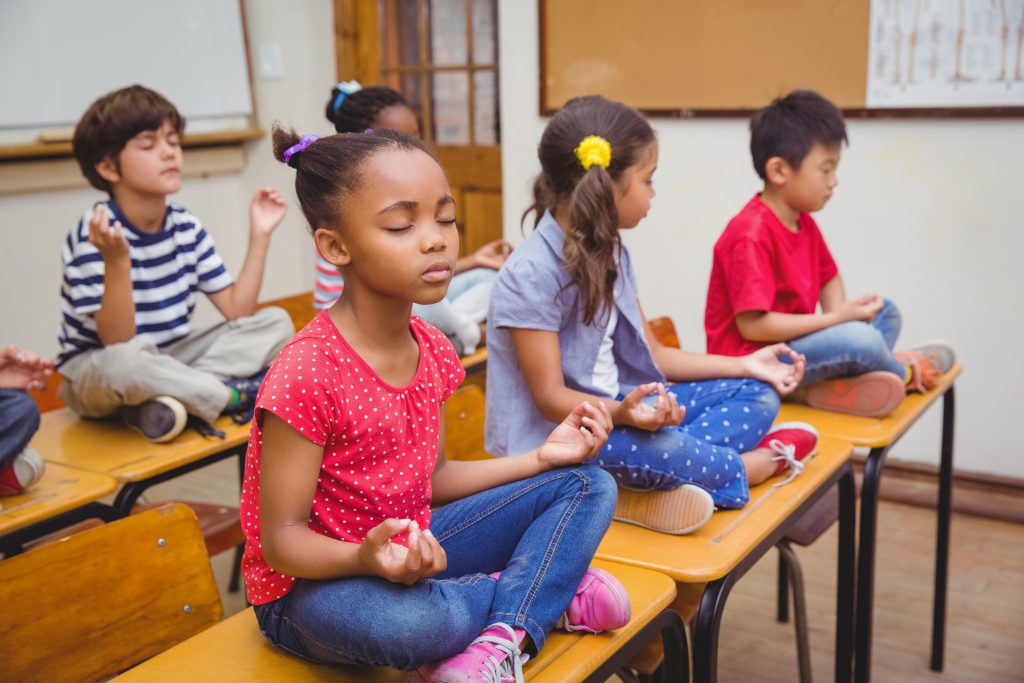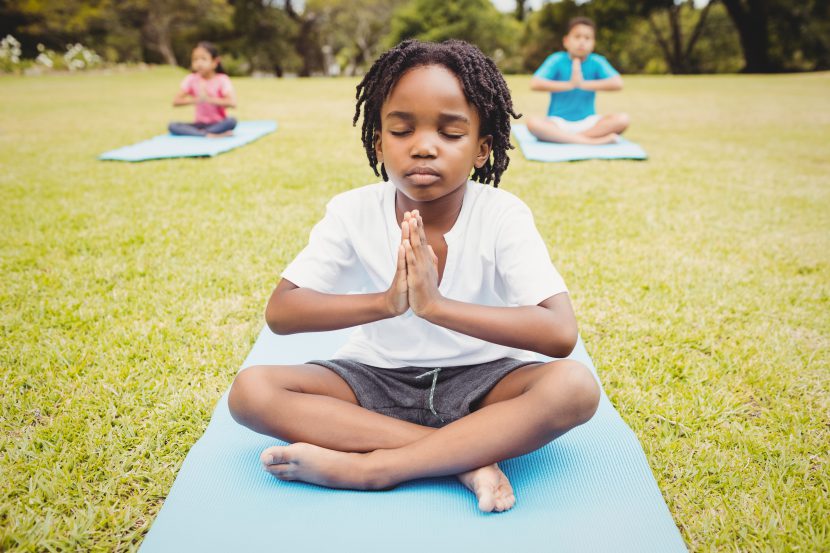In a world bustling with activity, children, and adults alike, often get caught up in emotional chaos. On that account, the newer generations are realizing the importance of reducing anxiety to lead a more purposeful life. Incorporating mindfulness into homes and classrooms can be a great method to help children cope with stress. The popularity of meditation is on the rise, as more and more practitioners get to witness the mental health benefits.
Child’s early brain development
Parents and caretakers have a significant influence on children’s early brain development. Children are known to thrive in environments where they are safe, but also free to explore the world. Consequently, the guardians have a direct impact on children’s nutritional health, and brain growth stimulation. The amount of time the child spends playing, socially interacting, and building on their interest, has proven to be a good indicator of future success in educational and emotional life.
Apart from the wide array of vaccines that protect children from dangerous brain diseases at such a sensitive age, the overall physical and mental health of the mother who carries the baby is of crucial importance. That doesn’t only refer to detrimental habits of smoking or drinking, but also states such as depression or anxiety. Considering “the first 8 years can build a child’s foundation for future learning, health, and life success,” bringing up healthy individuals should start from the moment they are born (CDC, 2022).
By the age of five, children’s brain is already 90% developed. The rest 10% of the growth takes place over the next twenty years, which means that human brains fully evolve around mid-twenties, on average. (Li P, 2022) The adults are still capable of creating new connections and neurons after this age, but this example serves to demonstrate how easy it is to imprint a child’s developing brain. According to child development professionals, “what parents do or don’t do during these formative years can have a profound impact on the child’s healthy development – mental health and physical health” (Li P, 2022).
The positive effects of mindfulness
Mindfulness refers to the idea of slowing down, becoming observant, and kindly acknowledging the thoughts and feelings that come up to the surface. In the center of the human brain, there is a complex structure of cells, better known as the amygdala. Adults and children alike activate this center in the brain when they experience overwhelming emotions.
As the amygdala forms an important role in memory creation and cognitive functions, children who had a strong negative emotional experience in the past will find it challenging to focus and retain information. These effects can be successfully reversed by subsiding amygdala activation through the regular practice of mindfulness (Guy-Evans O, 2021).
Various studies have confirmed that children who don’t have access to basic goods and live a life in poverty are less likely to be successful later in life. Based on the research data, it will be hard for them to form social relationships and regulate emotional behavior as they grow older. This is due to the fact that “extreme poverty is associated with lower gray matter volume and academic achievement” (Li P, 2022).
These children are oftentimes poor performers in school, simply because they can’t focus on learning whilst struggling with uncertainty. In cases like this, mindfulness-based programs can be of great aid for teachers who can then foster a sense of learning mindset. By practicing mindfulness regularly, these children can have a better chance to break the cycle of poverty (Michigan Radio, 2015).
Empirical studies on mindfulness for children at school
Thousands of children all around the world participated in numerous studies conducted to get a better insight into mindfulness practices for school-aged children. The control and experimental groups were exposed to mindfulness programs for a couple of weeks, or sometimes even months. The results have shown that the children who practiced mindfulness not only “lowered aggression, social anxiety, and stress levels,” but also displayed “improvements in executive functions like cognitive control, working memory, cognitive flexibility – and better math grades” (Azarian B, 2016).

Parents and teachers continued reporting cognitive control improvements even for children suffering from bipolar, and attention-deficit hyperactivity disorder. These children were then able to self-regulate their emotions by taking a step back when faced with strong emotions and rewiring the brain by focusing on something as simple as breathing slowly and steadily (Azarian B, 2016). While it is true that many children benefit from these programs, introducing mindfulness to teenagers has proven to be a more challenging endeavor.
The Myriad Research organization conducted a study among hundreds of schools in the United Kingdom, proving that mindfulness-based initiatives were not only unsuccessful but also boring for most of the students. Most of them had minimal exposure to the classes in school, failing to practice at home. Although they got familiar with the basics of mindfulness, 28,000 students didn’t find this technique particularly effective (Weale S, 2022).
On a positive note, the teachers and the staff reported short-term positive effects that helped them cope with stress at work. Although short-lived, this proves that mindfulness continues to embody resilience and help children navigate uncertain times (Weale S, 2022). Therefore, it is important to encourage participation by delivering the training in a context that would satisfy children of different age groups, by also anticipating problems, and offering tangible support when needed.
Meditation as a form of mindfulness
Children don’t have to sit in silent meditation in order to practice mindfulness, it can be incorporated into walking, eating, as well as studying. The idea behind this principle is to help children reduce anxiety and improve focus so they can do well in school, and also in life. When practicing mindfulness on a daily level, even for just a couple of minutes, the children are better able to control the centers for stress and fear response in the brain (Michigan Radio, 2015).
While it’s true that meditation and mindfulness are interwoven together, the two differ in nature and purpose. As a mental training method, meditation serves to help practitioners to implement mindfulness in day-to-day life. This essentially means that mindfulness can be practiced throughout the day, in various circumstances. Mindfulness doesn’t refer to the absence of thoughts, but rather a balanced state of mind in which the individuals observe the present moment, and bring their attention back to breathing. In other words, “you can be mindful without being in a state of meditation, but you cannot be in a state of meditation without being mindful” (Silva L, 2022).
Here at Humanium, we continue to keep a close eye on children’s mental and physical health. We help the most vulnerable communities in India and Rwanda to realize their inherent rights by involving experts from the fields of child therapy and psychology. Meditation and mindfulness continue to play an important role in our approach to trauma healing and resilience building. Due to Humanium methodology, thousands of children around the world have reaped the benefits of training and workshops led by some of Humanium’s best life coaches, psychologists, leadership graduates and therapists.

If you are an advocate for children’s rights, please join us on the mission of creating a lasting impact on children’s lives around the globe. You can always volunteer with us, support a child, or donate to the cause. We are always very grateful for every contribution!
Written by Lidija Misic
Bibliography:
Azarian Bobby, The Mindful Child (2016). Retrieved from New York Times at https://archive.nytimes.com/well.blogs.nytimes.com/2016/05/10/the-mindful-child/, accessed on November 16, 2022.
Early Brain Development and Health (2022). Retrieved from Centers for Disease Control and Prevention (CDC) at https://www.cdc.gov/ncbddd/childdevelopment/early-brain-development.html, accessed on November 15, 2022.
Guy-Evans Olivia, Amygdala Function and Location (2021). Retrieved from Simply Psychology at https://www.simplypsychology.org/amygdala.html, accessed on November 16, 2022.
Li Pamela, Early Brain Development in Children (2022). Retrieved from Parenting for Brain at https://www.parentingforbrain.com/brain-development/, accessed on November 16, 2022.
Michigan Radio, Could mindfulness help Michigan’s kids escape poverty? (2015). Retrieved from Michigan Radio at https://stateofopportunity.michiganradio.org/education/2015-10-13/could-mindfulness-help-michigans-kids-escape-poverty, accessed on November 16, 2022.
Silva Lauren, Mindfulness Vs. Meditation: What’s The Difference? (2022). Retrieved from Forbes Health at https://www.forbes.com/health/mind/mindfulness-vs-meditation/, accessed on November 21, 2022.
Weale Sally, Mindfulness in schools does not improve mental health, study finds (2022). Retrieved from The Guardian at https://www.theguardian.com/society/2022/jul/12/mindfulness-schools-does-not-improve-mental-health-study, accessed on November 16, 2022.


